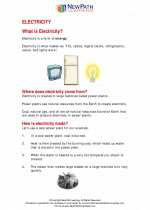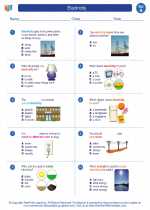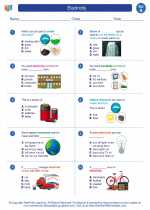States of Matter
The three most common states of matter are solid, liquid, and gas. Each state has its own unique properties and behaviors.
Solid
A solid is a state of matter that has a definite shape and volume. The particles in a solid are packed closely together and vibrate in place. Solids do not flow and are not easily compressed.
Liquid
A liquid is a state of matter that has a definite volume but no definite shape. The particles in a liquid are close together but can move past each other. Liquids can flow and take the shape of their container, but they are not easily compressed.
Gas
A gas is a state of matter that has neither a definite shape nor a definite volume. The particles in a gas are far apart and move freely. Gases can flow and expand to fill their container, and they are easily compressed.
Changes of State
Matter can change from one state to another through processes such as melting, freezing, evaporation, condensation, and sublimation.
Study Guide
- What are the three most common states of matter?
- Describe the properties of a solid.
- Explain the behavior of particles in a liquid.
- How do gases behave in terms of shape and volume?
- Provide examples of changes of state.
Remember to review the definitions, properties, and behaviors of each state of matter, as well as the processes involved in changing from one state to another.
.◂Science Worksheets and Study Guides First Grade. Electricity

 Worksheet/Answer key
Worksheet/Answer key
 Worksheet/Answer key
Worksheet/Answer key
 Worksheet/Answer key
Worksheet/Answer key
